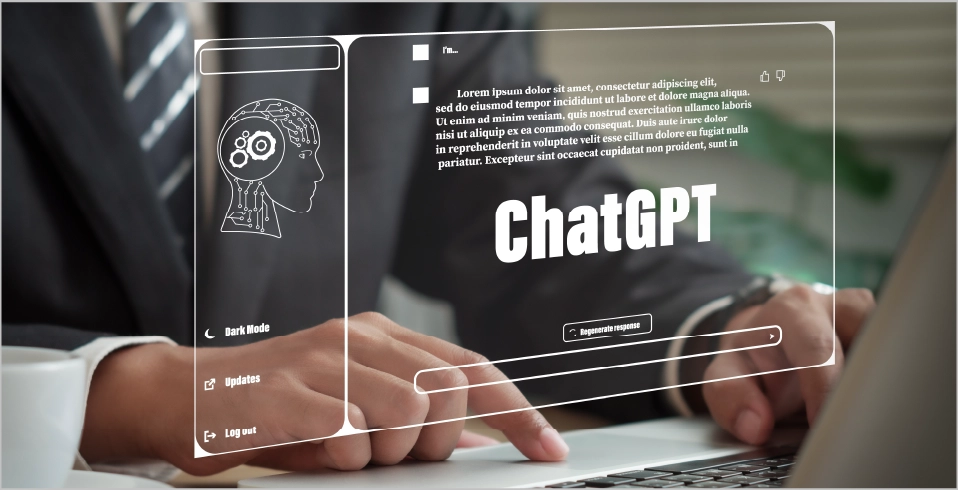Recent research from Oracle has found that 80% of businesses are already using or plan on implementing a chatbot solution within the next year. As technology advances, more companies are turning to Chatbots and Artificial Intelligence (AI) tools to enhance customer service, increase productivity, and drive growth.
Chatbots are one of the most revolutionary technologies transforming businesses’ operations and staying Agile. The latest one to add to the popularity list is ChatGPT, a language model built by OpenAI, based on their GPT (Generative PreTrained Transformer) model. Unlike other AI-powered chatbots, ChatGPT is trained to prompt and provide detailed responses following given instructions by the user. Open AI, the creators of ChatGPT claim that their newly launched chatbot can interact with users conversationally, answer follow-up queries, reject inappropriate questions, admit mistakes, and even challenge incorrect premises.
However, like any other tool, ChatGPT also has its limitations. The chatbot is not free from errors. AI-powered smart bots like ChatGPT might sometimes write plausible-sounding, but nonsensical or incorrect answers and is also sensitive to how the user phrases the input. However, at the moment, ChatGPT is in a research preview mode, so we can expect the smart tool to evolve with time to overcome the weaknesses.
In this blog post, we’ll explain how ChatGPT could work as a business intelligence tool and understand whether businesses should have an open AI strategy or not to drive successful Business Agility initiatives.
How Does It Work?
Revolutionizing how companies communicate, ChatGPT is a powerful tool that uses NLP (Natural Language Processing) to identify conversation patterns and accurately predict what the user is looking for when asking a question.

Once the user’s intent has been identified, ChatGPT uses its knowledge base of up-to-date data and insights from experts worldwide to provide accurate answers and recommendations tailored specifically for each user’s situation. This allows companies to make informed decisions faster than ever before while also improving customer service levels by providing customers with quick, efficient responses that solve their problems quickly and easily.
ChatGPT offers predictive analytics that enables users to identify patterns in customer behavior and anticipate future trends based on past information. This capability allows businesses to develop better strategies for targeting potential customers and improving their overall marketing efforts. Additionally, it helps streamline the market research process by providing real-time actionable insights that can be used to make more informed decisions about product development or launching new campaigns.
Should you have an Open AI or AI strategy for your organization?
An AI strategy is a plan that outlines how a company can use artificial intelligence technologies to achieve its business goals. For example, a company might create an AI strategy that improves customer service by implementing chatbots or virtual agents. An effective AI strategy should be tailored specifically to the organization’s needs and include goals such as cost savings, increased efficiency, improved decision-making processes, etc.

Organizations can maximize their investments in artificial intelligence technologies by creating an effective and comprehensive AI strategy while ensuring they receive maximum benefit. Additionally, having a well-thought-out plan can help alleviate any potential issues related to deploying new technologies in the organization, such as data privacy concerns or employee resistance to change.
Implementing an effective Open AI strategy within your organization can provide many benefits, such as cost savings on development costs and access to valuable insights from experienced professionals who understand working with machine learning models.
However, developing such a strategy requires careful planning and execution, including defining success criteria up front and a comprehensive understanding of machine learning algorithms used by the developed model, along with regular monitoring post-implementation. With these steps taken into consideration, organizations should set themselves up for success when utilizing this powerful technology solution for their business needs!
Final Thoughts:
As businesses strive for greater efficiency and cost savings through automation and technology, it’s evident that many organizations are turning towards AI as a solution.

In particular, ChatGPT’s advanced capabilities and ease of use made it quite popular, garnering a lot of attention. Many experts believe that ChatGPT’s ability to learn and respond to information quickly is likely to make it a valuable asset for companies that are into market research, customer service, online education, and more.
With the overwhelming response ChatGPT has received during its research preview period, it won’t be surprising to see how ChatGPT is leveraging across business verticals in the coming years.
At Quinnox, our experts provide Agile business solutions tailored to the ever-changing landscape. We’ve been working towards successful Business Agility for years, and we know what it takes to help our clients succeed. Read more about Quinnox’s AI offerings here If you want to know more about how Quinnox sets up processes for Business Agility or wish to implement the same at your organization, read more here or reach us at [email protected].